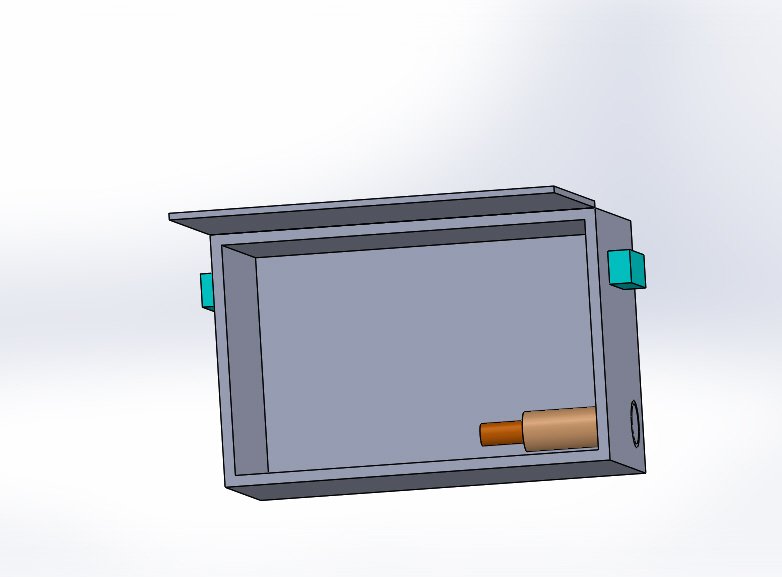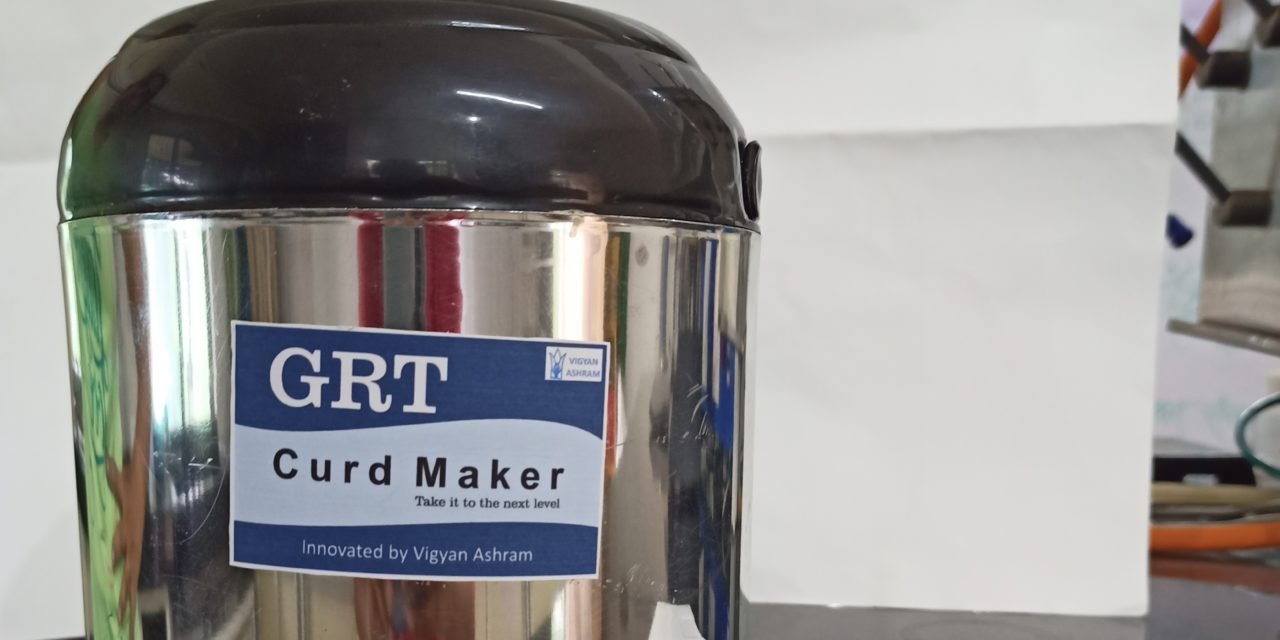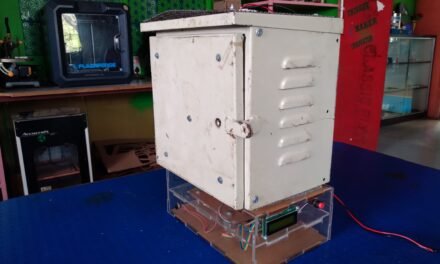Curd Maker: The time taken for the milk to get converted to curd largely depends on the temperature. In a warm, hot and humid climate, the time taken for the curd to set will be 4 to 7 hours. Whereas in a cool or cold climate, the time taken can be 8 to 12 hours. Curd making machine is the best invention for the dairy farms as this machine can help the farmers and even the homemakers to make the curd instantly. This machine has an inbuilt container with different capacities. Curd maker have capacity for making curd in large quantity in hygienic conditions along with retaining its quality.
Need of project: In Our Vigyan Ashram, we have a Curd Maker Machine (capacity 20-25 liter). But we did not use this machine for household purpose. So there is a need to design portable small product with a capacity of 2 liter.
Objective: To design small, portable curd maker for household purpose.
Introduction: Vigyan Ashram designed a curd maker machine (capacity 20-25 liter) which is running on AC supply but now we want to make a small, portable curd maker capacity (2 liter) and solar operated. To make curd we require a constant 40 degree Celsius temperature for approximately 3:30 hours. In this system, a heating coil is used to heat the water inside this machine. How much water to heat depends on the size and shape of the pot.
Challenges: 1) choose appropriate material for the curd maker
Scopes:
In India, about 7 % of the total annual milk production is utilized for making dahi for direct consumption. Fermented milk products such as dahi (curd), Lassi (sweetened yoghurt drink) / chhach (buttermilk) and shrikhand (drained curd added with sugar and flavoring) figure prominently in people’s diet. Dahi is an age-old indigenous fermented milk of India and has managed its popularity in Indian diet despite changing lifestyles and food habits. According to FICCI (2008) report, the estimated market size for Dahi (in both organized and unorganized) sector is Rs. 160 billion. Methods for commercial production of dahi have been standardized by several dairy plants in India. The industry continuously looks for improvement and strives for use of latest technologies. Even though India has the highest cattle population and the world’s highest milk production, its share in fermented milk and probiotic is negligible. A huge potential exists and the Indian probiotic market presents a thriving scenario in the near future. Increasing awareness and rural penetration of products can prove to be a winning proposal.
Concept design: When heating element used in the curd maker

Selection of insulation material For good insulation, Thermal resistance (R value) = high 1) Mineral wool: R value ranging from 2.8 to 3.5/ inch Ex. glass wool 2) fiber glass: R value(Thermal resistance) ranging from 2.9 to 3.8/ inch 3) Polystyrene: R value(Thermal resistance) ranging from 5.5/ inch 4) Polyurethane foam: R value ranging from 3.4 to 6.7 / inch from the above material list, polyurethane material is the best insulation material.
Required material list and specifications:
| Sr. No. | Material | Specification | Quantity |
| 1 | Insulated pot | MODWARE Kanter Stainless Steel Insulated Water JUG 3LTR(Silver) Stainless Steel Insulated | 1 |
| 2 | Temperature controller | Aptechdeals AP-IS11A001 Mini LCD digital Thermometer Sensor Wired for Room Temperaure/Fridges | 1 |
Steps: 1) Select the superior insulated double walled vacuum flask is designed for maximum temperature retention. It Keeps hot liquids warm for up to 4 hours and cold liquids cold for up to 5 hrs. The wide mouth makes it easy to fill, serve from and clean. It has heat resistant handle for easy carrying and easy storage. 2) First, heated the water to 40 degrees and poured it into a vacuum flask. After 4 hours the water temperature was 34 degrees Celsius.
Trials on Milk: 3) Then take the first test on the milk, heat 250 grams of milk to 40 degrees and add 12 grams of yogurt. mixed well. 4) Poured into a vacuum flask. After 4 hours the temperature of the curd was 28 degrees Celsius. But that curt became too thin. 5) From this test it was found that a temperature of 40 degrees is not suitable for making thick curd. To raise the temperature for achieving final result. 6) Then take milk, heat up to 45 degree and add curd. Poured in vacuum flask. After 4 hours curd is ready. 7) For measure temperature, We will use temperature controller.
Usage guidelines:
Step 1: Take milk in a pot and While heating, dip steel part of the temperature meter into the pot.
Step 2: When the milk temperature reaches 47 degrees, remove the temperature meter and pour milk into the curd maker.
Step 3: Add some curd in it and mix properly.(for 250ml add one spoon of curd)
Step 4: Then cover the curd maker tightly.
Step 5: After 4 hour, we get fresh curd. Pour it in a pot.
Step 6: The curd is now ready for the consumption. If the curd is not consumed immediately. Then it is stored in the refrigerator.
Precautions:
1)The milk should not be heated above 47 degrees and poured into the curd maker 2) Submerge probe only, do not immerse the thermometer in the water 3) While making the curd, cover the curd maker tightly 4) Once the curd is made, wash and dry the curd maker
Manual link: 1)https://docs.google.com/document/d/1znSq_ccNjFQ98z2ktqyaGqLTf4d3iU_CY0QSXHLxErg/edit (In English) 2) https://docs.google.com/document/d/1ZbmkMVfjfXC4N0SJB-B2bf_EKOreQf5pKfg_sQ8e3jI/edit (In Marathi)
Reference:
- https://nkdairyequipments.com/curd-making-machine/
- https://www.vegrecipesofindia.com/how-to-make-curd-dahi-homemade-curd-dahi/#:~:text=The%20time%20taken%20for%20the,14.
- https://www.thespruceeats.com/how-to-make-yogurt-in-an-electric-yogurt-maker-909013#:~:text=Fill%20the%20Yogurt%20Containers&text=Place%20the%20cover%20on%20the,the%20yogurt%20maker%2C%20and%20cover.



